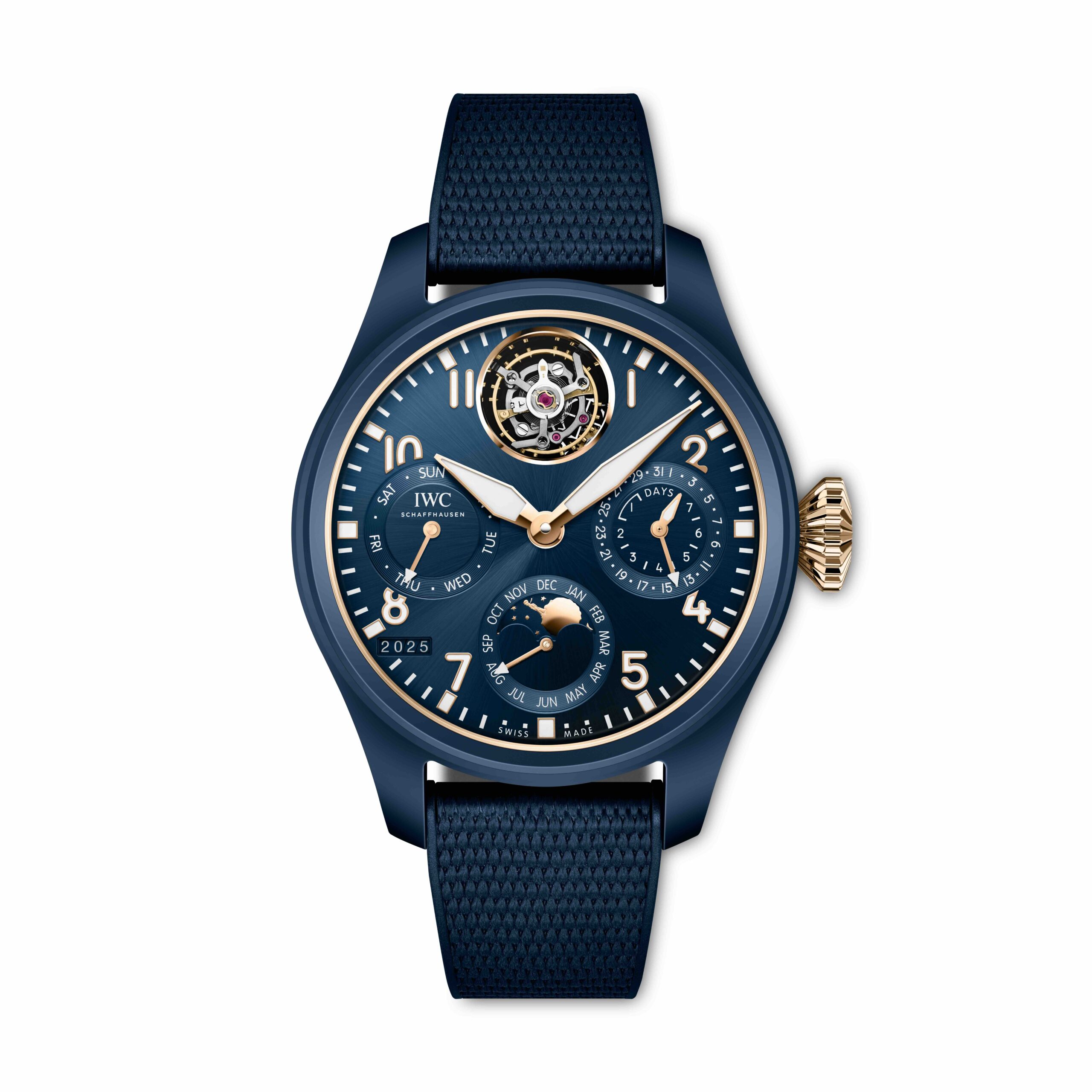
3 Apr 2025 By AK
IWC TWO HIGH COMPLICATIONS IN ONE WATCH
Schaffhausen/Geneva, 1st April 2025: IWC Schaffhausen presents the Big Pilot’s Watch Perpetual Calendar Tourbillon Le Petit Prince at Watches and Wonders Geneva. Dedicated to Antoine de Saint-Exupéry’s famous novel, this highly complex watch combines a blue ceramic case and a blue dial with a case back ring and crown made of 18-carat 5N gold. The IWC-manufactured 51950 calibre powers a perpetual calendar and a flying minute tourbillon. Visible through the sapphire glass case back, the solid gold rotor of the automatic winding system takes the shape of the Little Prince standing on his asteroid. IWC Schaffhausen continues its series of Pilot’s Watches dedicated to “The Little Prince”, the most popular novel from the famous French aviator and author Antoine de Saint-Exupéry. The Big Pilot’s Watch Perpetual Calendar Tourbillon Le Petit Prince (Ref. IW504901) is limited to 100 pieces. Reflecting the recurring blue colour element of these special editions, it features a 46.5-millimetre case crafted from blue ceramic, a blue dial and a blue textured rubber strap. These are combined with a case back ring and the characteristic conical crown made of 18-carat 5N gold. The gold-plated appliques and hands are filled with Super-LumiNova® to ensure perfect legibility.

TWO HIGH COMPLICATIONS IN ONE WATCH
With a perpetual calendar and a flying minute tourbillon, this extraordinary Big Pilot’s Watch combines two high complications. The flying minute tourbillon at 12 o’clock consists of 82 parts and weighs only 0.635 grams. This sophisticated mechanism places the pallet lever and the escapement in a small cage that rotates around its own axis once every minute. The continuous rotation contributes to offsetting the effects of gravity on the watch’s oscillating system, thereby significantly increasing its accuracy. Originally developed by Kurt Klaus during the 1980s, the perpetual calendar displays the calendar information on three subidals. The one at 3 o’clock combines the date with a power reserve indicator, while the one at the 6 o’clock position integrates both the month and the perpetual moon phase display. Thanks to a reduction gear train with two intermediate wheels, the moon phase will only deviate by one day after 577.5 years. The subdial at 9 o’clock shows the day of the week. This version also features a four-digit year display. The calendar is programmed to recognise the different months’ lengths and will automatically insert a leap day every four years. As all its displays are synchronised, it can be advanced simply via the crown. With a perpetual calendar and a flying minute tourbillon, this extraordinary Big Pilot’s Watch combines two high complications. The flying minute tourbillon at 12 o’clock consists of 82 parts and weighs only 0.635 grams. This sophisticated mechanism places the pallet lever and the escapement in a small cage that rotates around its own axis once every minute. The continuous rotation contributes to offsetting the effects of gravity on the watch’s oscillating system, thereby significantly increasing its accuracy. Originally developed by Kurt Klaus during the 1980s, the perpetual calendar displays the calendar information on three subidals. The one at 3 o’clock combines the date with a power reserve indicator, while the one at the 6 o’clock position integrates both the month and the perpetual moon phase display. Thanks to a reduction gear train with two intermediate wheels, the moon phase will only deviate by one day after 577.5 years. The subdial at 9 o’clock shows the day of the week. This version also features a four-digit year display. The calendar is programmed to recognise the different months’ lengths and will automatically insert a leap day every four years. As all its displays are synchronised, it can be advanced simply via the crown.
Both complications are powered by the IWC- manufactured 51950 calibre, a highly complex movement consisting of 474 parts. Crafted from solid gold and visible through the open case back, the rotor of the automatic winding system takes the shape of the Little Prince standing on his asteroid. Just like in Antoine de Saint-Exupéry’s famous novel, asteroid B 612 is covered with wild-growing baobab trees.
/

